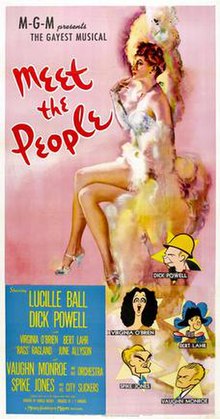
Broadway Melody of 1936 is a musical film released by Metro-Goldwyn-Mayer in 1935. In New York, the film opened at the Capitol Theatre, the site of many prestigious MGM premieres. It was a follow-up of sorts to the successful The Broadway Melody, which had been released in 1929, although, there is no story connection with the earlier film beyond the title and some music.
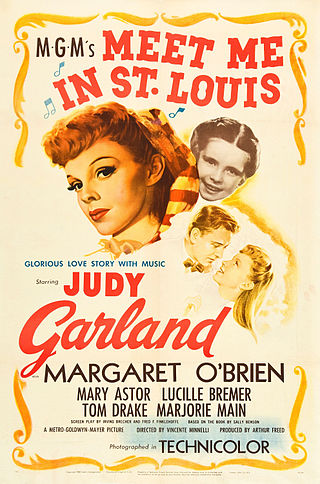
Meet Me in St. Louis is a 1944 American Christmas musical film made by Metro-Goldwyn-Mayer. Divided into a series of seasonal vignettes, starting with Summer 1903, it relates the story of a year in the life of the Smith family in St. Louis leading up to the opening of the Louisiana Purchase Exposition in the spring of 1904. The film stars Judy Garland, Margaret O'Brien, Mary Astor, Lucille Bremer, Tom Drake, Leon Ames, Marjorie Main, June Lockhart and Joan Carroll.

June Allyson was an American stage, film, and television actress.
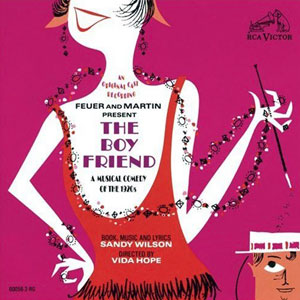
The Boy Friend is a musical by Sandy Wilson. Its original 1954 London production ran for 2,078 performances, briefly making it the third-longest running musical in West End or Broadway history until they were all surpassed by Salad Days. The Boy Friend marked Julie Andrews' American stage debut.
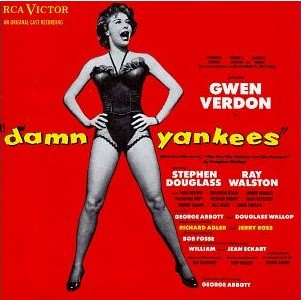
Damn Yankees is a 1955 musical comedy with a book by George Abbott and Douglass Wallop, music and lyrics by Richard Adler and Jerry Ross. The story is a modern retelling of the Faust legend set during the 1950s in Washington, D.C., during a time when the New York Yankees dominated Major League Baseball. It is based on Wallop's 1954 novel The Year the Yankees Lost the Pennant.
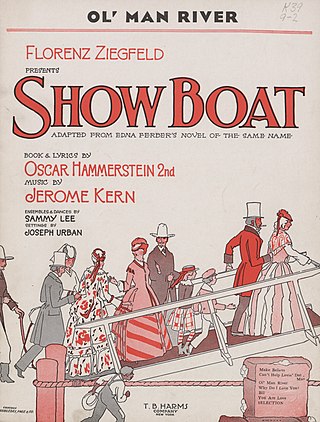
Show Boat is a musical with music by Jerome Kern and book and lyrics by Oscar Hammerstein II. It is based on Edna Ferber's best-selling 1926 novel of the same name. The musical follows the lives of the performers, stagehands and dock workers on the Cotton Blossom, a Mississippi River show boat, over 40 years from 1887 to 1927. Its themes include racial prejudice and tragic, enduring love. The musical contributed such classic songs as "Ol' Man River", "Make Believe", and "Can't Help Lovin' Dat Man".

A chorus line is a large group of dancers who together perform synchronized routines, usually in musical theatre. Sometimes, singing is also performed. While synchronized dancing indicative of a chorus line was vogue during the first half of the 20th century, modern theatre uses the terms "ensemble" and "chorus" to indicate all supporting players in a stage production.
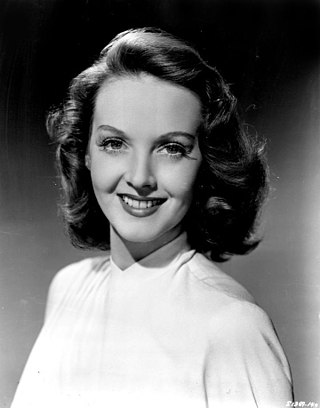
Lucille Bremer was an American film actress and dancer.
That's Entertainment! is a 1974 American compilation film released by Metro-Goldwyn-Mayer to celebrate the studio's 50th anniversary. The success of the retrospective prompted a 1976 sequel, the related 1985 film That's Dancing!, and a third installment in 1994.
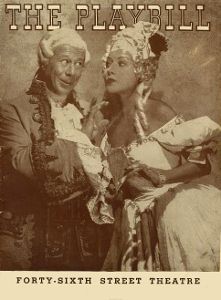
Du Barry Was a Lady is a Broadway musical, with music and lyrics by Cole Porter, and the book by Herbert Fields and Buddy DeSylva. The musical starred Bert Lahr, Ethel Merman and Betty Grable, and the song "Friendship" was one of the highlights. The musical was made into a 1943 Technicolor film Du Barry Was a Lady, starring Red Skelton, Lucille Ball, Gene Kelly and Tommy Dorsey and his orchestra.

Ziegfeld Follies is a 1945 American musical comedy film released by Metro-Goldwyn-Mayer, primarily directed by Vincente Minnelli, with segments directed by Lemuel Ayers, Roy Del Ruth, Robert Lewis, and George Sidney, the film's original director before Minnelli took over. Other directors that are claimed to have made uncredited contributions to the film are Merrill Pye, Norman Taurog, and Charles Walters. It stars many MGM leading talents, including Fred Astaire, Lucille Ball, Lucille Bremer, Fanny Brice, Judy Garland, Kathryn Grayson, Lena Horne, Gene Kelly, James Melton, Victor Moore, William Powell, Red Skelton, and Esther Williams.

Marilyn Miller was one of the most popular Broadway musical stars of the 1920s and early 1930s. She was an accomplished tap dancer, singer and actress, and the combination of these talents endeared her to audiences. On stage, she usually played rags-to-riches Cinderella characters who lived happily ever after. Her enormous popularity and famed image were in distinct contrast to her personal life, which was marred by disappointment, tragedy, frequent illness, and ultimately her sudden death due to complications of nasal surgery at age 37.

Till The Clouds Roll By is a 1946 American Technicolor musical film produced by Metro-Goldwyn-Mayer and a fictionalized biopic of composer Jerome Kern, portrayed by Robert Walker. Kern was involved with the production, but died before its completion. It was the first in a series of MGM biopics about Broadway composers.
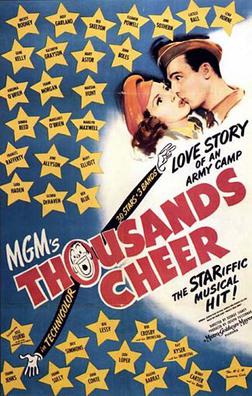
Thousands Cheer is a 1943 American musical comedy film directed by George Sidney and released by Metro-Goldwyn-Mayer. Produced during the Second World War, the film was intended as a morale booster for American troops and their families.
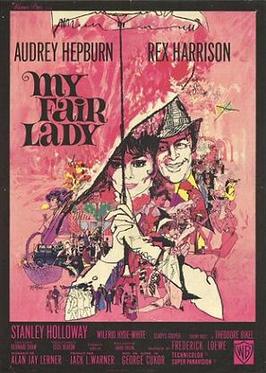
My Fair Lady is a 1964 American musical comedy-drama film adapted from the 1956 Lerner and Loewe stage musical based on George Bernard Shaw's 1913 stage play Pygmalion. With a screenplay by Alan Jay Lerner and directed by George Cukor, the film depicts a poor Cockney flower-seller named Eliza Doolittle who overhears an arrogant phonetics professor, Henry Higgins, as he casually wagers that he could teach her to speak "proper" English, thereby making her presentable in the high society of Edwardian London.
"The Most Beautiful Girl in the World" is a show tune from the 1935 Rodgers and Hart musical Jumbo when it was introduced by Gloria Grafton and William J. McCartney.
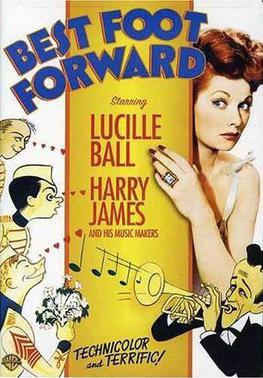
Best Foot Forward is a 1943 American musical film adapted from the 1941 Broadway musical comedy of the same title. The film was released by Metro-Goldwyn-Mayer, directed by Edward Buzzell, and starred Lucille Ball, William Gaxton, Virginia Weidler, Chill Wills, June Allyson, Gloria DeHaven, and Nancy Walker.

Mame is a 1974 Technicolor musical film in Panavision based on the 1966 Broadway musical of the same name and the 1955 novel Auntie Mame by Patrick Dennis.
"I Like to Recognize the Tune" is an American popular song written by composer Richard Rodgers and lyricist Lorenz Hart. The song was introduced by Eddie Bracken, Marcy Wescott, Mary Jane Walsh, Richard Kollmar and Hal Le Roy in the 1939 Broadway musical Too Many Girls.

Best Foot Forward is a 1941 musical with songs by Hugh Martin and Ralph Blane and a book by John Cecil Holm. Produced by George Abbott, after an out-of-town tryout, the production opened on Broadway on October 1, 1941 at the Ethel Barrymore Theatre, where it ran for 326 performances. It was directed by Abbott, with choreography by Gene Kelly, and starred Rosemary Lane. The show was Nancy Walker's Broadway debut and also launched June Allyson to stardom. Sets and lighting were by Jo Mielziner, and costumes were by Miles White.
